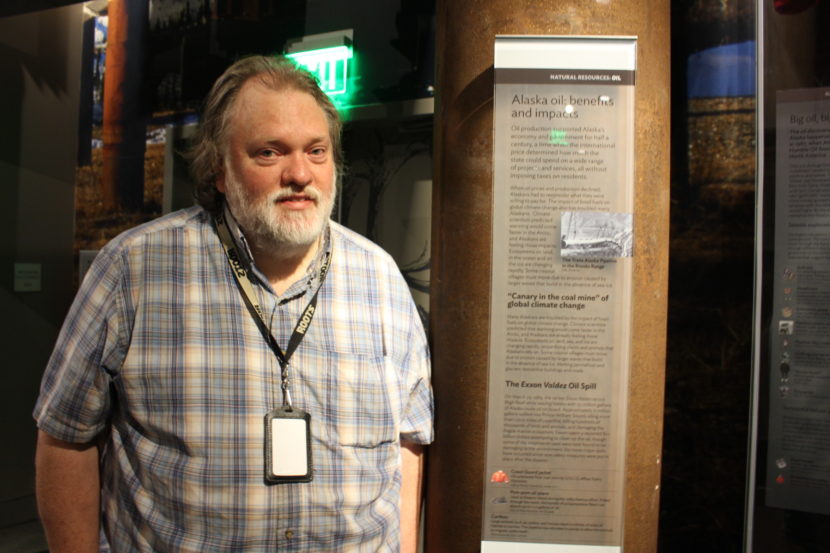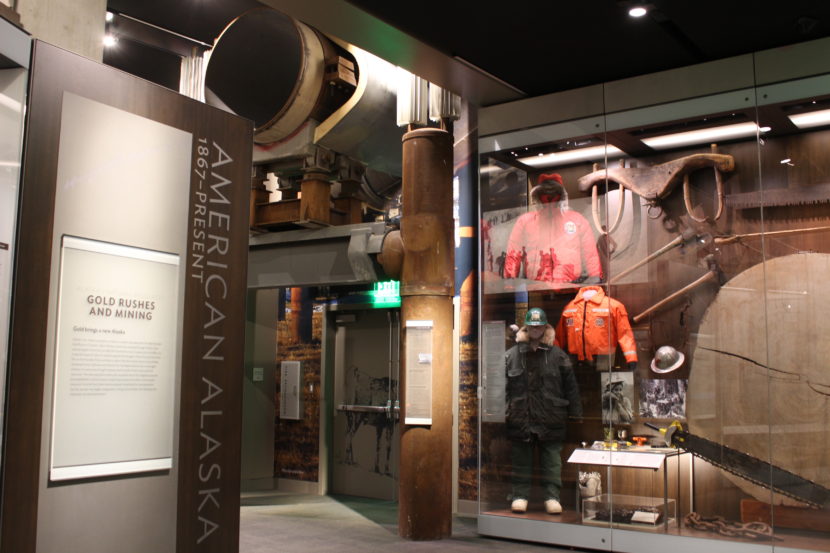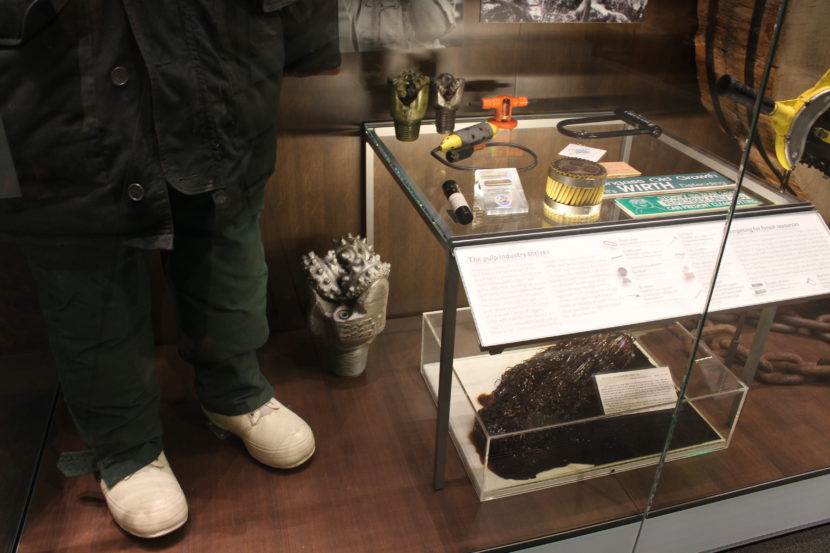
The State Library, Archives and Museum opened recently in Juneau with a new display that includes a piece of the trans-Alaska pipeline as part of an exhibit on the oil industry. But the drama of the state’s current fiscal crisis puts that history in a new light.
Steve Henrikson tells stories with things. Sometimes those objects go way back, like woven baskets from 6,000 years ago. But part of Henrikson’s job as a museum curator is also collecting items from this century, and that can take some guesswork.
“Trying to figure out, what in 100 years from now will be significant to people then that speaks to our time in history,” Henrikson said.
And when it comes to significant events that happened recently — or relatively recently — Henrikson says there was something missing in the museum’s permanent collection: the development of the trans-Alaska pipeline.
So, the museum went to work to curate pieces for its new building from that point in history. Now behind glass, there’s a drill bit, an engineering uniform worn on the North Slope and much more.
Under the dim museum lights, the section of pipeline looks like a rusty football goal post with a circular tube balanced on top. Bob Banghart — the museum’s deputy director — says other collectors have a piece of it. But he doesn’t think anyone has a part that’s standing 18 feet off the floor.
Three years ago, Banghart says the museum approached Alyeska Pipeline Service Co. which runs the pipeline.
“At first, they were kind of, ‘Well, hmm.’ And we explained our intent,” Banghart said.
Banghart says they wanted to show a continuous theme with the whole museum collection: “the human mind’s creative adaptability.”

If you look back in history, the development of the pipeline helped solve a huge problem. How do you transport valuable crude from the North Slope down to the Lower 48? Do you try to float it on an icebreaking tanker through the Northwest Passage? That’s something the oil industry actually tried and it worked once, but that was deemed impractical.
The pipeline — on the other hand — made transporting the oil much easier. Banghart says you can see that same ingenuity in other items, like the spear point.
“So, we felt that the corollary between the pipeline and spear point was established that we wanted a piece of the pipeline,” Banghart said.
But there’s another recurring theme in Alaska’s history that keeps coming up inside the museum.
“The state’s economy came to rely largely on oil revenue, but oil is not a sustainable resource and is running out,” Steve Henrikson reads off a plaque in the museum called Timber, Oil and the Quest for Sustainability. He says you can see a boom and bust cycle in other time periods — in displays about the fur trade, the gold rush and logging in the Tongass National Forest.
“If people went to exhibits like this and paid more attention to human history, I think we could avoid some of those problems,” Henrikson said. “But we’re all human beings and humans sometimes don’t make the best decisions.”
For the museum itself, the current fiscal crisis has meant scaling back. Henrikson is doing double duty — working his job as a curator and filling in at the front desk. The museum hasn’t been able to bring on seasonal workers, due to the state’s hiring freeze.
But Henrikson says he doesn’t mind. He likes the opportunity to mingle with visitors and talk with them about what they’ve learned — even though some of the history behind the exhibits isn’t always a happy one.
“We’re not trying to tell a feel good story here. We’re trying to put the facts out there and people can decide for themselves what it might mean,” he said.
As for what’s going to happen in Alaska’s future, Henrikson says he’ll be watching and collecting.

